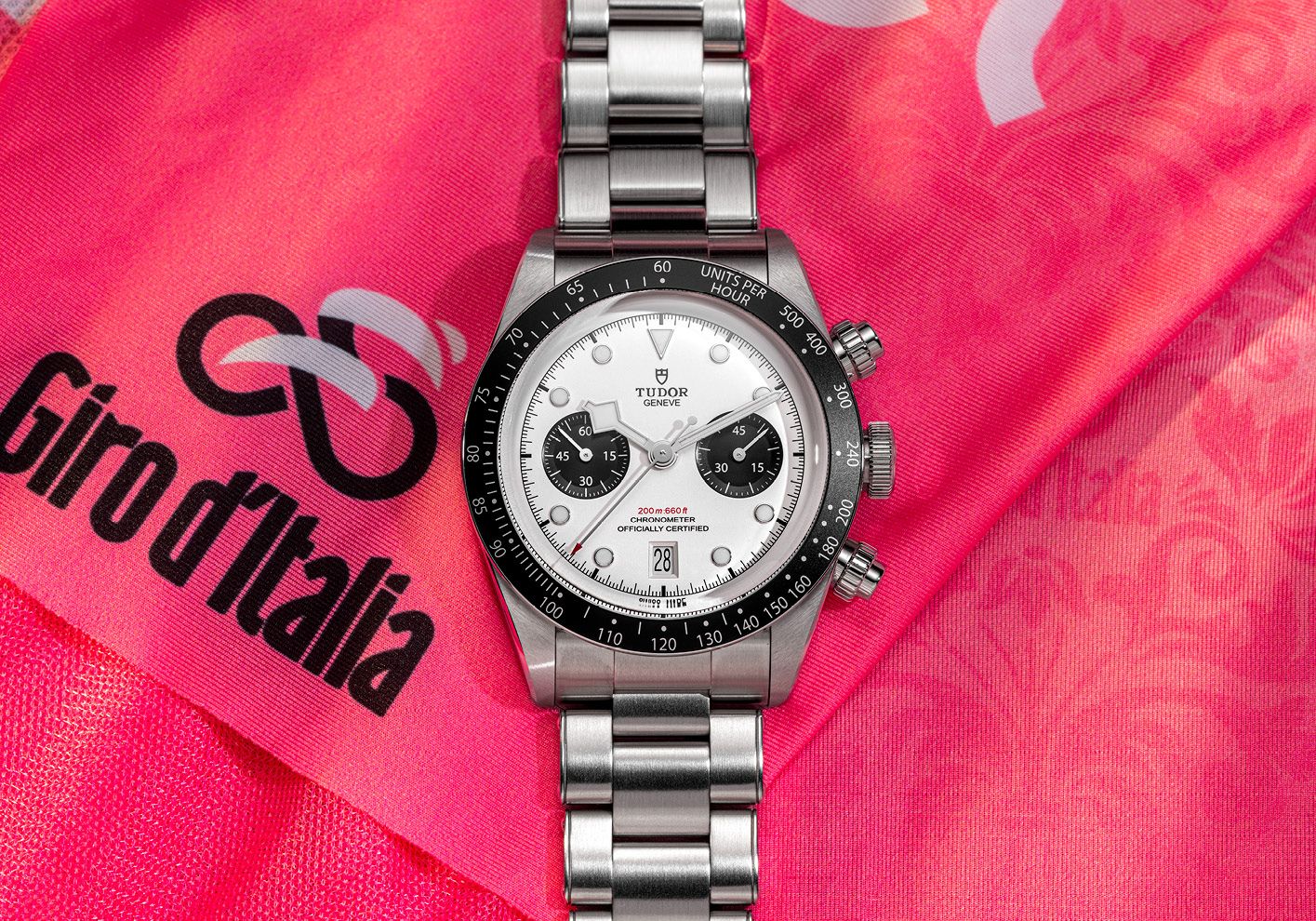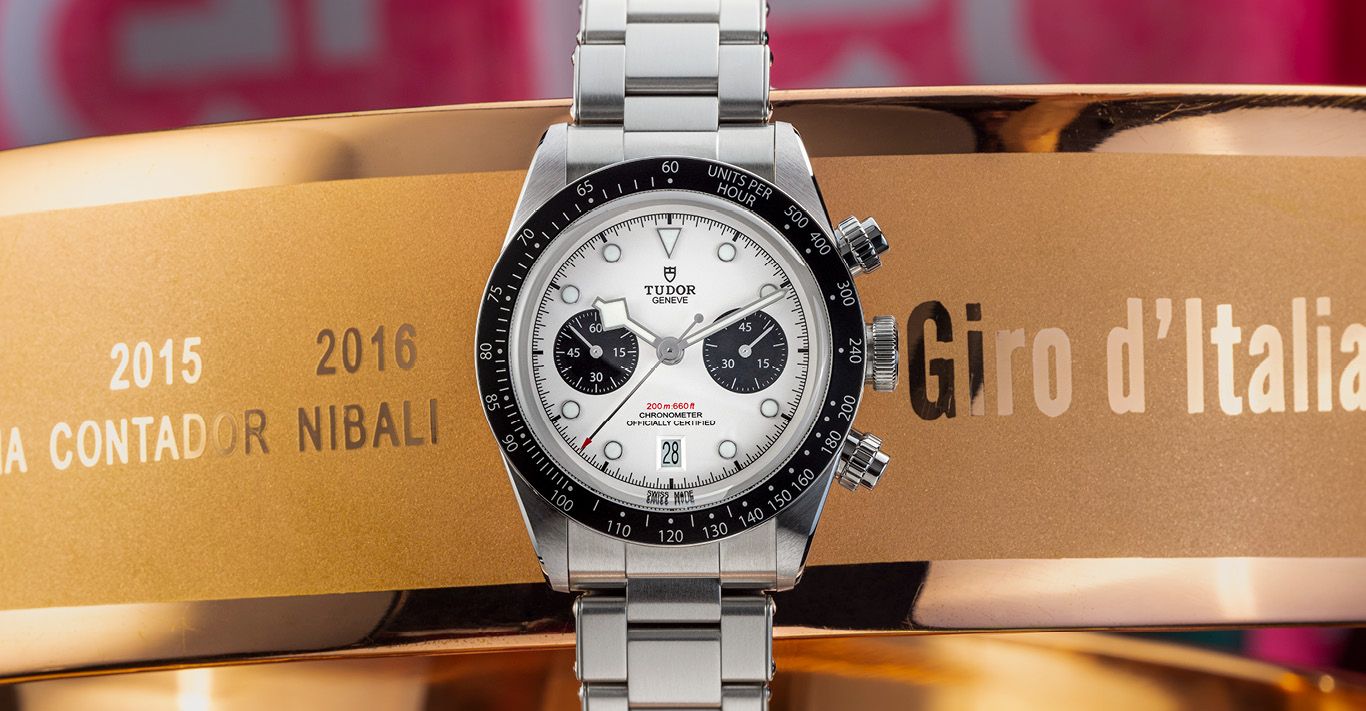WORDS
Nicholas Ross
Last year saw luxury Swiss watch brand Tudor collaborate with cycling legend Fabian Cancellara in creating Tudor Pro Cycling.
This year, it became a UCI Pro team, meaning it can now compete in the world’s most prestigious cycling races. In March, it made its first appearance at Strade Bianche, a technically difficult race through Tuscany. Given its arduous climbs and tricky gravel sections, winning the race tends to presuppose previous experience. The victory Cancellara therefore sought was that his team raced well together, approaching the challenge with the right attitude.
Such an attitude is shared by Tudor, which has further cemented its commitment to the sport by becoming the Official Timekeeper for all RCS Sport-supported races. These include two Monument Classics (the Milan-San Remo and Il Lombardia), the Strade Bianche, and the legendary Giro d’Italia.
The Giro is a 3-week stage race that is arguably the most physically and psychologically demanding Grand Tour. Its history has been characterised by crashes and hardship from the first. When it began in 1909, only 49 of its 127 competitors managed to even finish. Indeed, former competitors have often portrayed it as a hellish experience reflected by the sublime landscapes through which it takes place only insofar as these are populated by boundless mountain ranges.
For it involves a blizzard of adverse circumstances, from the frequency of terrible weather to the need to constantly alternate between steep climbs and flat sprints throughout, never slowing to catch one’s breath.
So as to stand out from the peloton, the Giro’s leader at any given moment wears the pink jersey known as the Maglia Rosa. It was introduced in 1931 by race director Emilio Colombo and sports journalist Armando Cougnet, whose publication La Gazzetta dello Sport orchestrated the first Giro d’Italia.

To make this change to the race, however, they needed approval from Benito Mussolini, who disliked the colour pink for its putative femininity. But with such daring as defines the Giro’s competitors, they argued their case, eventually convincing Il Duce. The garment has come to represent what heart and stoicism characterise the race’s champions.
And since these champions are made in fractions of a second, the stakes couldn’t be higher for the new timekeeper. Though Tudor is evidently #BornToDare, the quality of its timepieces suggests it will, however, certainly flourish in the role.
Take the Tudor Black Bay Chronograph, for instance. Since 1954 and 1970, respectively, Tudor has been innovating professional divers’ watches and timepieces inextricably bound with motor sports. The model nods to this varied heritage in a sleek, sporty design that is waterproof to 200m.
And it boasts such versatility as the Giro demands of its participants. It’s self-winding and has a power reserve of approximately 70 hours. It’s highly legible, featuring a high contrast opaline dial whose counters, sub dials and bezel are black. And the precision of its Manufacture Calibre MT5813, which features a bidirectional rotor system, is certified by the Contrôle Officiel Suisse des Chronomètres.
This year, Tudor has reinterpreted the iconic watch in several new iterations. Clearly the wheels, as they say, are still turning.
Explore the new offering at tudorwatch.com




